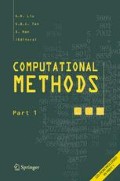Abstract
Artificial neural network can be categorized according to the type of learning, that is, supervised learning versus unsupervised learning. Unsupervised learning can find the major features of the origin data without indication. Adaptive resonance theory can classify large various data into groups of patterns. Through analysing the limit of adaptive resonance theory, a dynamic clustering algorithm is provided. The algorithm not only can prevent from discarding irregular data or giving rise to dead neurons but also can cluster unlabelled data when the number of clustering is unknown. In the experiments, the same data are used to train the adaptive resonance theory network and the dynamic clustering algorithm network. The results prove that dynamic clustering algorithm can cluster unlabelled data correctly.
Access this chapter
Tax calculation will be finalised at checkout
Purchases are for personal use only
Preview
Unable to display preview. Download preview PDF.
REFERENCES
H. Ressom, D. Wang and P. Natarajan (2003), Adaptive double self-organizing maps for clustering gene expression profiles. Neural Network, 16, 633–640.
B. Hammer, A. Micheli, A. Sperduti and M. Strickert (2004), A general framework for unsupervised processing of structured data.Neurocomputing, 57, 3–35.
K.L. Wu and M.S. Yang (2003), A fuzzy-soft learning vector quantization. Neuroncomputing, 55, 681–697.
W.K. Fung and Y.H. Liu (2001), A game-theoretic adaptive categorization mechanism for ART-type networks. Lecture Notes in Computer Science, 2130, 170–176.
W.K. Fung and Y.H. Liu (2003), Adaptive categorization of ART networks in robot behavior learning using game-theoretic formulation. Neural Networks, 16, 10, 1403–1420.
R. Kamimura (2003), Competitive learning by information maximization: Eliminating dead neurons in competitive learning. Lecture Notes in Computer Science, 2714, 99–106.
L. Andrew (2000), Analyses on the generalized lotto-type competitive learning. Lecture Notes in Computer Science, 1983, 9–16.
M. Stephen, S. Jonathan and N. Ulrich (2002), A self-organising network that grows when required. Neural Networks, 15, 1041–1058.
I. Hirotaka and N. Hiroyuki (2003), Efficiency of self-generating neural networks applied to pattern recognition. Mathematical and Computer Modelling, 38, 1225–1232.
T.M. Nair, C.L. Zheng and J.L. Fink (2003), Rival penalized competitive learning (RPCL): A topology-determining algorithm for analyzing gene expression data. Computational Biology and Chemistry, 27, 565–574.
Z.Y. Liu, K.C. Chiu and L. Xu (2003), Local PCA for line detection and thinning. Lecture Notes in Computer Science, 2683, 21–34.
M.A. Garcia-Bernal, J. Munoz-perez, J.A. Gomez-Ruiz and I. Ladron de Guevara-lopez (2003), A competitive neural network based on dipoles. Lecture Notes in Computer Science, 2686, 398–405.
G. Acciani, E. Chiarantoni, G. Fornarelli and S. Vergura (2003), A feature extraction unsupervised neural network for an environment data set. Neural Networks, 16, 427–436.
Author information
Authors and Affiliations
Editor information
Editors and Affiliations
Rights and permissions
Copyright information
© 2006 Springer
About this paper
Cite this paper
Tian, D., Liu, Y., Shi, J. (2006). DYNAMIC CLUSTERING ALGORITHM BASED ON ADAPTIVE RESONANCE THEORY. In: LIU, G., TAN, V., HAN, X. (eds) Computational Methods. Springer, Dordrecht. https://doi.org/10.1007/978-1-4020-3953-9_35
Download citation
DOI: https://doi.org/10.1007/978-1-4020-3953-9_35
Publisher Name: Springer, Dordrecht
Print ISBN: 978-1-4020-3952-2
Online ISBN: 978-1-4020-3953-9
eBook Packages: EngineeringEngineering (R0)

